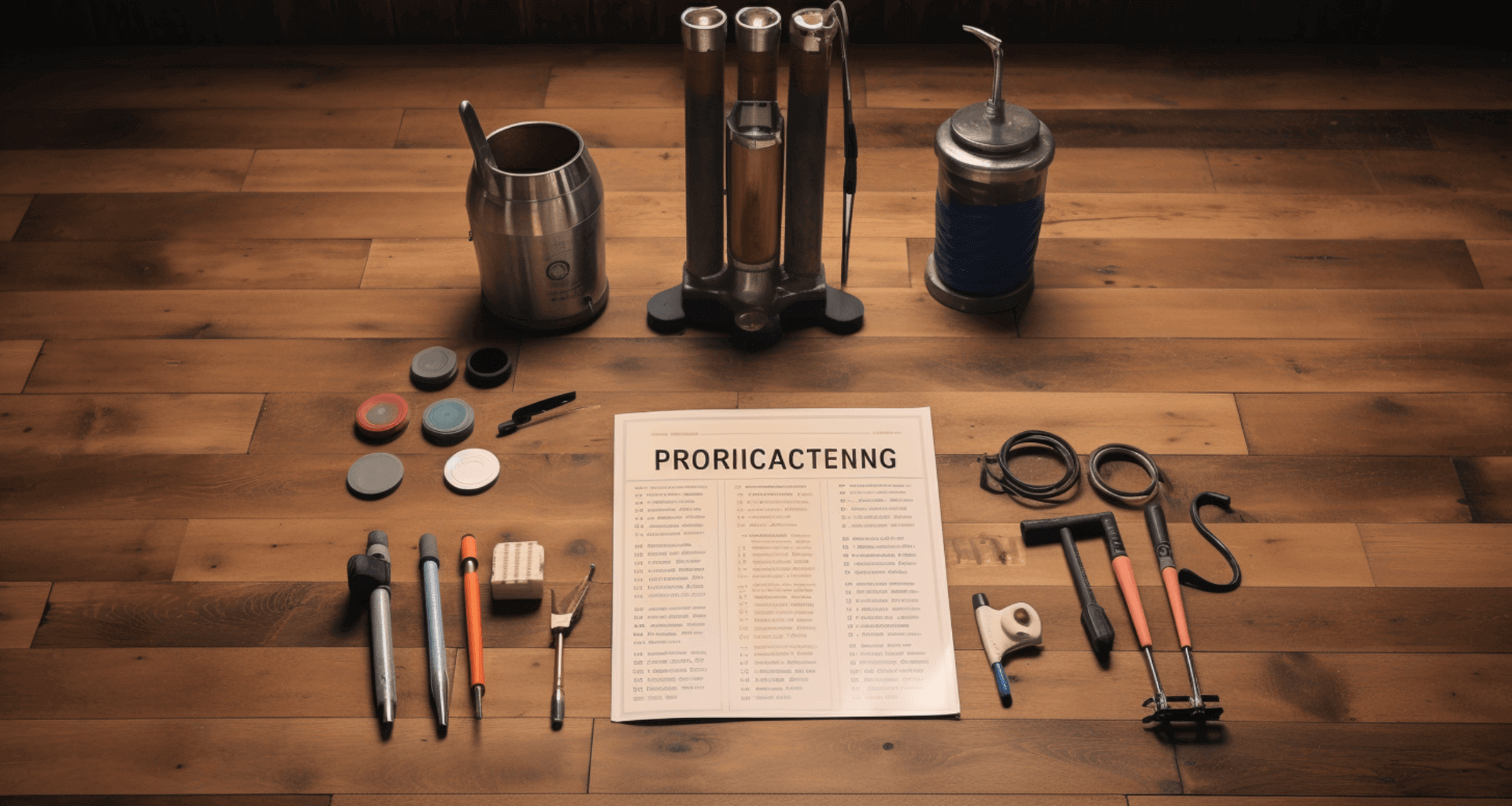What is Wooden Floor Sanding?
Wooden floor sanding is a crucial process for both home owners and business owners in London. It involves the removal of the top layer of the wood floor to reveal a fresh, smooth surface. This process is important for several reasons.
Wooden floor sanding helps to improve the longevity of the floor. over time, wooden floors can become worn, scratched, and damaged. sanding down the surface removes these imperfections, allowing the floor to look like new again. by removing the damaged layer, the floor is better protected against further wear and tear, ensuring it lasts longer.
Wooden floor sanding greatly enhances the appearance of the floor. the process helps to restore the original beauty of the wood, making it look more attractive and inviting. sanding down the surface also helps to even out any uneven areas, creating a smooth and uniform look.
It is crucial to hire a professional service like gjp floor sanding for wooden floor sanding. professionals have the experience, expertise, and right tools to ensure the job is done correctly and efficiently. we can provide advice on the best type of sanding for the specific type of floor, as well as recommend the best products to protect the floor from future damage. hiring professionals ensures that the floor is restored to its original condition and maintained properly.
Why is it important to Hire a Certified and Insured Professionals?
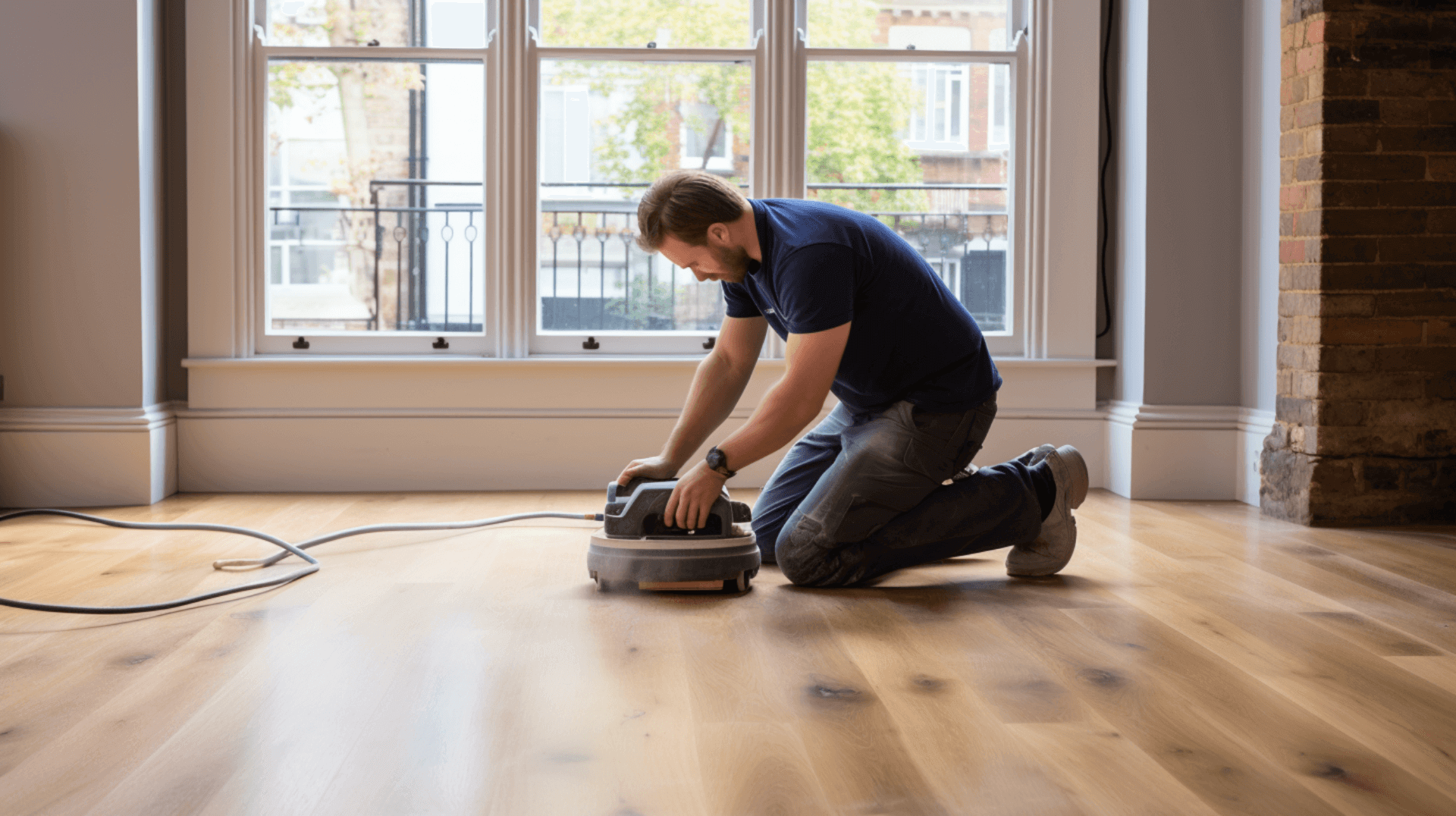
When it comes to wooden floor sanding, it is important to hire a certified and insured service. Certification and insurance provide customers with peace of mind that the service they are receiving is of the highest quality and that they are protected in the event of any accidents or damages.
Certification is a sign of quality. it shows that the service provider has the necessary skills and experience to carry out the job correctly and safely. it also indicates that the service provider is up to date with the latest industry standards and regulations.
Insurance provides customers with protection in the event of any accidents or damages. if the service provider is insured, customers can be assured that they will be compensated for any losses or damages that may occur during the sanding process.
Finally, there are risks associated with hiring an uninsured or uncertified service. Without certification, there is no guarantee that the service provider has the necessary skills and experience to carry out the job correctly and safely. Without insurance, customers are not protected in the event of any accidents or damages.
How do you evaluate the experience and expertese of a proffessional floor sanding company?

When it comes to wooden floor sanding, experience and expertise are essential. Experience is crucial as it ensures that the service provider has the necessary skills and knowledge to carry out the job correctly and safely. Expertise is also important as it ensures that the service provider is up to date with the latest industry standards and regulations.
A service like GJP Floor Sanding ensures quality work by employing experienced and knowledgeable personnel. All personnel are trained and certified in the latest techniques and safety protocols, and have the necessary skills and expertise to carry out the job correctly and efficiently. We also use the latest tools and equipment to ensure the job is done to the highest standards.
The service personnel should possess a range of skills and knowledge, including an understanding of the different types of wood, the different types of sanding techniques, and the different types of finishes. They should also be familiar with the latest safety protocols and be able to identify any potential hazards. Additionally, they should have knowledge about building suitability assessment and risks, as well as installation considerations such as ventilation, moisture control barriers, cold bridging, protected species, and building regulations.
What is the Floor Sanding Process?

The wooden floor sanding process involves several stages, each of which contributes to the final result. The first stage is the preparation stage, which involves removing any furniture, carpets, and other items from the floor. This is followed by the sanding stage, which involves using professional equipment to sand down the surface of the floor. The professional equipment used should be sharp and powerful, such as a bradawl, to ensure a thorough job. It is also important to probe carefully where timbers, such as purlins and joist ends, enter walls, as decay can be localized in these areas. Personal protective equipment should be worn during this stage to protect the workers from any potential hazards. Additionally, it is important to check for underfloor heating, damp-proof courses, condensation, and other potential issues that may arise during the sanding process.
The next stage is the finishing stage, which involves applying a protective finish to the floor. This helps to protect the floor from future damage and wear and tear. The final stage is the polishing stage, which involves using professional equipment to buff and polish the floor to a high shine.
Professional equipment plays an important role in the wooden floor sanding process. It is designed to be sharp, powerful, and efficient, allowing for a faster and more thorough job. The equipment can detect any internal decay in large-section timbers and identify the presence of water or condensate pipes in the sub-floor voids. This helps to ensure that any potential issues are addressed during the sanding process. By utilizing professional equipment, a wooden floor sanding service like GJP Floor Sanding can deliver exceptional results that meet the expectations of home owners and business owners in London.
How do I Assess the Quality of Equipment Used by the Floor Sanding Professionals
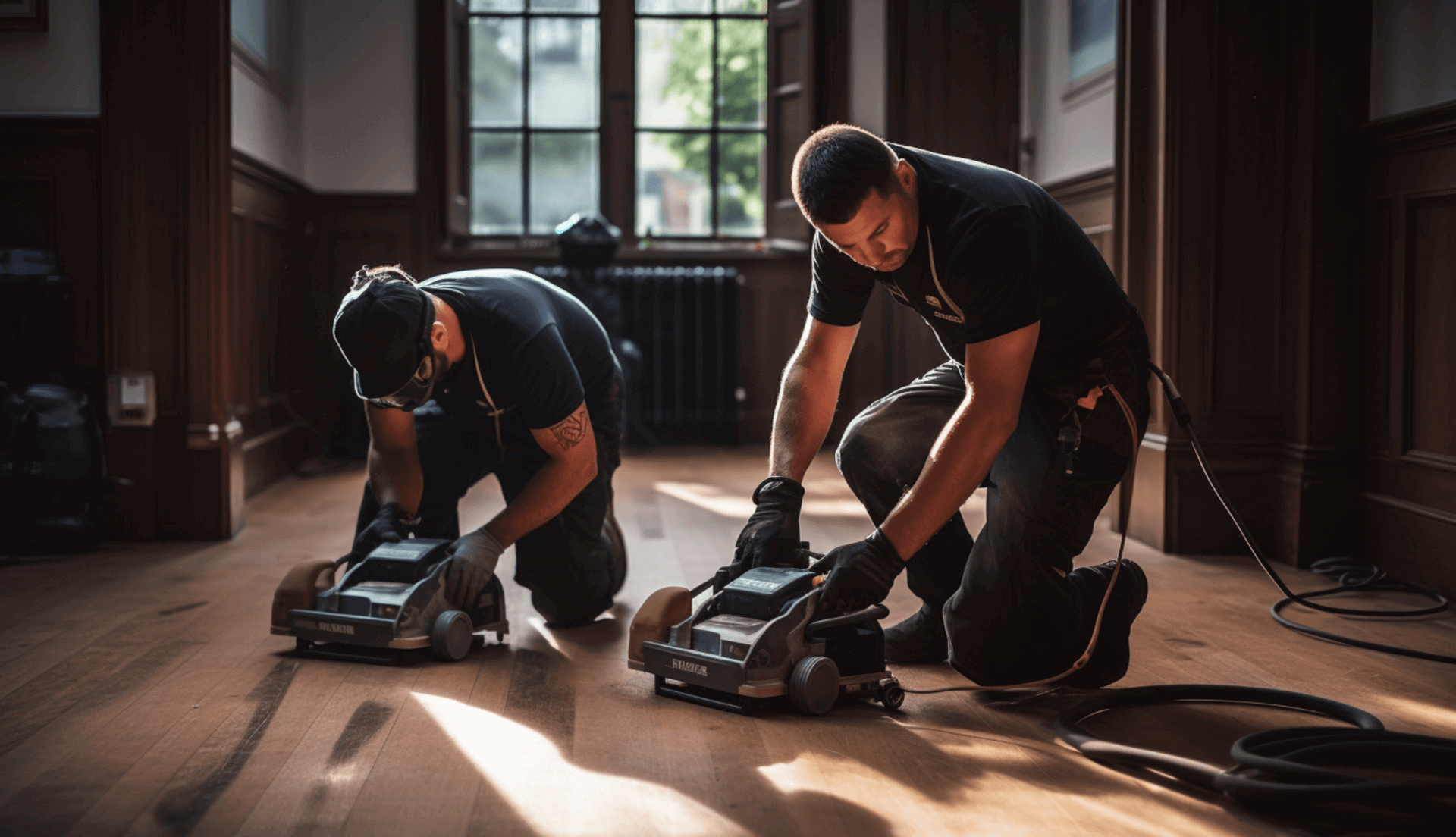
When it comes to wooden floor sanding, the quality of the equipment used is of paramount importance. Different types of equipment are used in the sanding process, including bradawls, sanders, polishers, and buffers. It is important to ensure that the equipment is sharp, powerful, and efficient, as this will ensure a faster and more thorough job. It is also important to probe carefully where timbers, such as purlins and joist ends, enter walls, as decay can be localized in these areas. Additionally, it is important to check for underfloor heating, damp-proof courses, condensation, and other potential issues that may arise during the sanding process. It is also important to check for any specific safety considerations as recommended by the manufacturer of the product or system utilized.
The quality of the equipment used has a direct impact on the final result. Poor quality equipment can lead to an uneven finish, as well as potential damage to the floor. High-quality equipment, on the other hand, can ensure a smooth and even finish, as well as a longer-lasting result.
In the context of improving the thermal performance of a suspended timber floor by adding extra insulation, it is important to consider the compatibility of the equipment used with the insulation materials. The sanding process should be carried out in a way that does not compromise the integrity or effectiveness of the insulation. It is recommended to consult with a professional wooden floor sanding service that has experience working with insulation materials and can provide guidance on the best practices for achieving both a high-quality sanding result and improved thermal performance.
By considering these factors and assessing the quality of the equipment used, you can have confidence in the service’s ability to deliver a high-quality result and ensure that your wooden floor is sanded to perfection while also achieving the desired thermal performance improvements.
How do I Decide on the Type of Finish for My Wooden Floor?

When it comes to wooden floor sanding, deciding on the type of finish is an important step. There are several types of finishes available, each of which has its own unique characteristics and benefits. The most common types of finishes are oil-based, water-based, and wax-based. Oil-based finishes are the most durable and provide a natural, matte finish. Water-based finishes are less durable but provide a glossy finish. Wax-based finishes are the least durable but provide a natural, matte finish.
The type of finish chosen will have a direct impact on the look and durability of the floor. Oil-based finishes are the most durable and provide a natural, matte finish. Water-based finishes are less durable but provide a glossy finish. Wax-based finishes are the least durable but provide a natural, matte finish.
When replacing at least half a floor, it is important to consider the building regulations as part of the renovation of a thermal element requirement. To achieve the required U-value, there are a range of materials available on the market that are appropriately certified for use as insulation under timber floors. It is important to check the manufacturers’ technical information to ensure the material is suitable for use as underfloor insulation (UFI) and to refer to the manufacturer’s specification sheets for installation guidelines.
GJP Floor Sanding can help you choose the right finish for your wooden floor. We have extensive experience in the field and can provide advice on the best type of finish for your particular needs. We are knowledgeable about the compatibility of finishes with insulation materials and can guide you in selecting the perfect finish to enhance the beauty and thermal performance of your wooden floor.
How do I Calculate the Cost Factors of Wooden Floor Sanding?
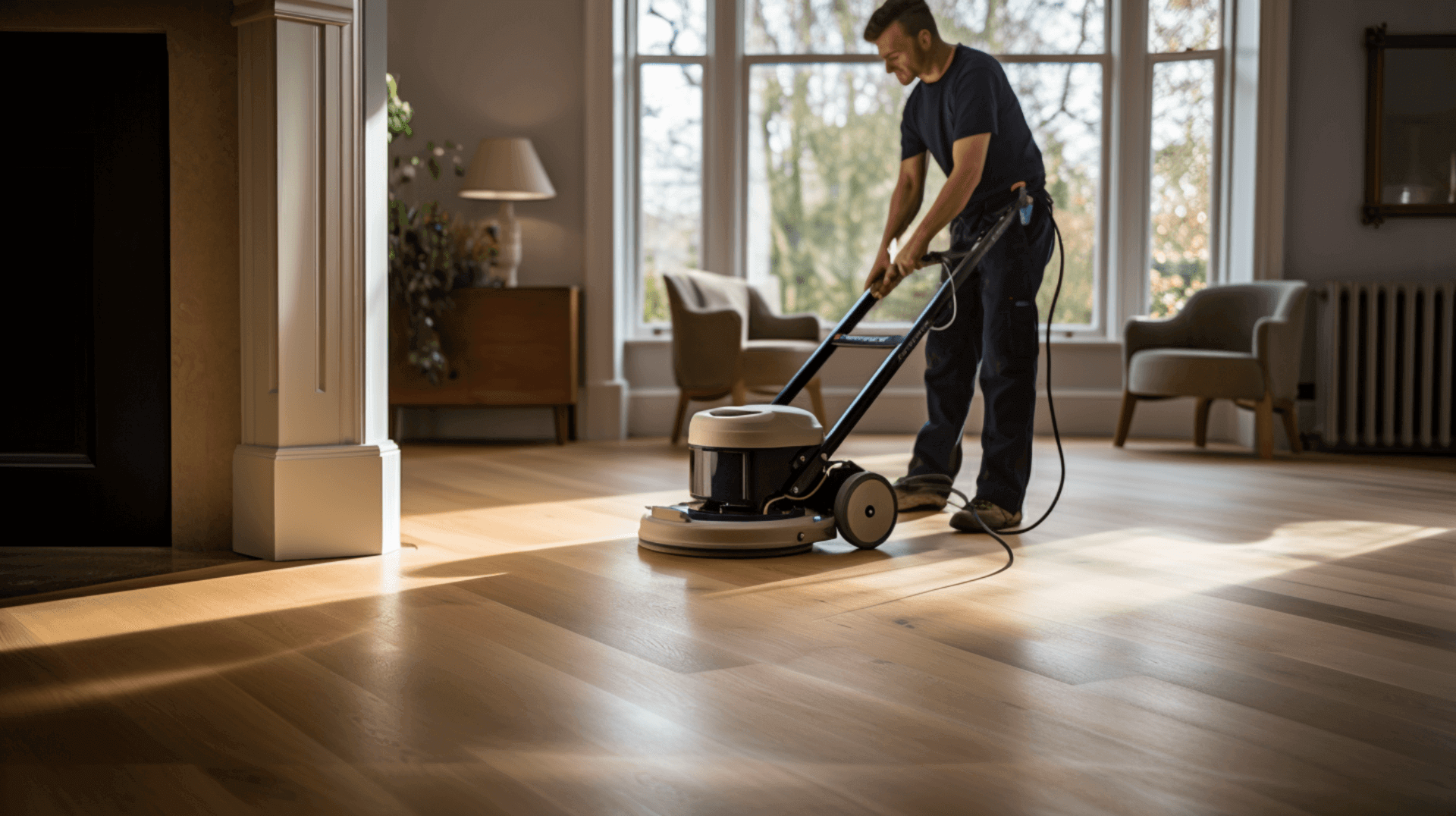
When it comes to wooden floor sanding, understanding the cost factors is essential. The cost of wooden floor sanding will depend on several factors, including the size of the floor, the type of finish chosen, the type of equipment used, the complexity of the job, the type of wood used, and any specific safety considerations.
The size of the floor is a significant factor in determining the cost. Larger floors will require more time and materials to sand, which can increase the overall cost. The type of finish chosen, such as oil-based, water-based, or wax-based, can also impact the cost, as some finishes are more expensive than others. Additionally, the type of equipment used plays a role in the cost. Professional equipment tends to be more expensive but can deliver better results.
The complexity of the job is another factor to consider. This includes the number of sanding passes required, any necessary repairs or filling of holes, and any specific safety considerations. For example, when adding extra insulation to improve the thermal performance of a suspended timber floor, it is important to ensure the compatibility of the equipment used with the insulation materials and follow the manufacturer’s guidelines for installation.
GJP Floor Sanding offers a cost-effective solution for wooden floor sanding. We use professional equipment that is sharp, powerful, and efficient, ensuring a thorough and high-quality job. By considering these factors and choosing a reputable service like GJP Floor Sanding, you can have confidence in the cost-effectiveness of your wooden floor sanding project.
How do I Prepare My Home or Business for Wooden Floor Sanding
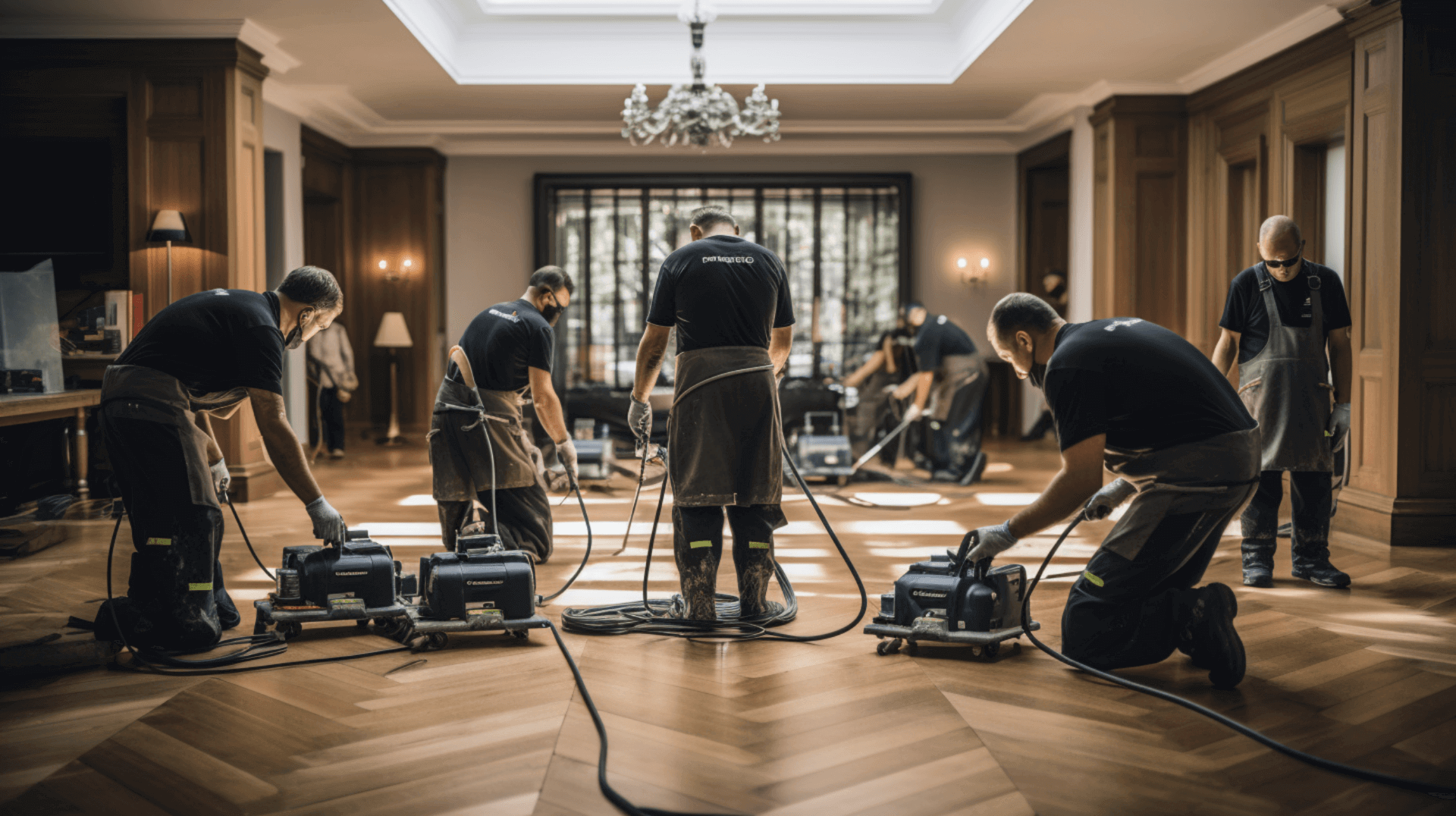
Preparing your home or business for wooden floor sanding is an important step in the process. Taking the time to properly prepare the space can help minimize disruption and ensure a successful outcome.
Before the sanding process begins, it is important to remove any furniture, rugs, and other items from the area. This will help to ensure that the sanding process is as efficient and effective as possible. Additionally, it is important to check for any pre-existing problems or defects and declare them to the technician before starting work.
It is also crucial to check the moisture content of the timbers. Timber moisture content should not exceed 20% to avoid the risk of decay. Using a moisture meter with electromagnetic capability allows for greater accuracy and depth of assessment. This helps identify any potential moisture-related issues that could accelerate decay or cover up existing problems, such as inadequate ventilation or leaks. It is also important to probe suspect timbers near actual or potential sources of dampness, using a sharp implement like a bradawl. Large-section timbers can often be assessed for internal decay by “sounding” with a large hammer.
By following these steps and working closely with the GJP Floor Sanding team, you can ensure that your space is properly prepared for wooden floor sanding. This attention to detail will contribute to a successful and long-lasting result.
What Aftercare and Maintenance is Required Post Wooden Floor Sanding
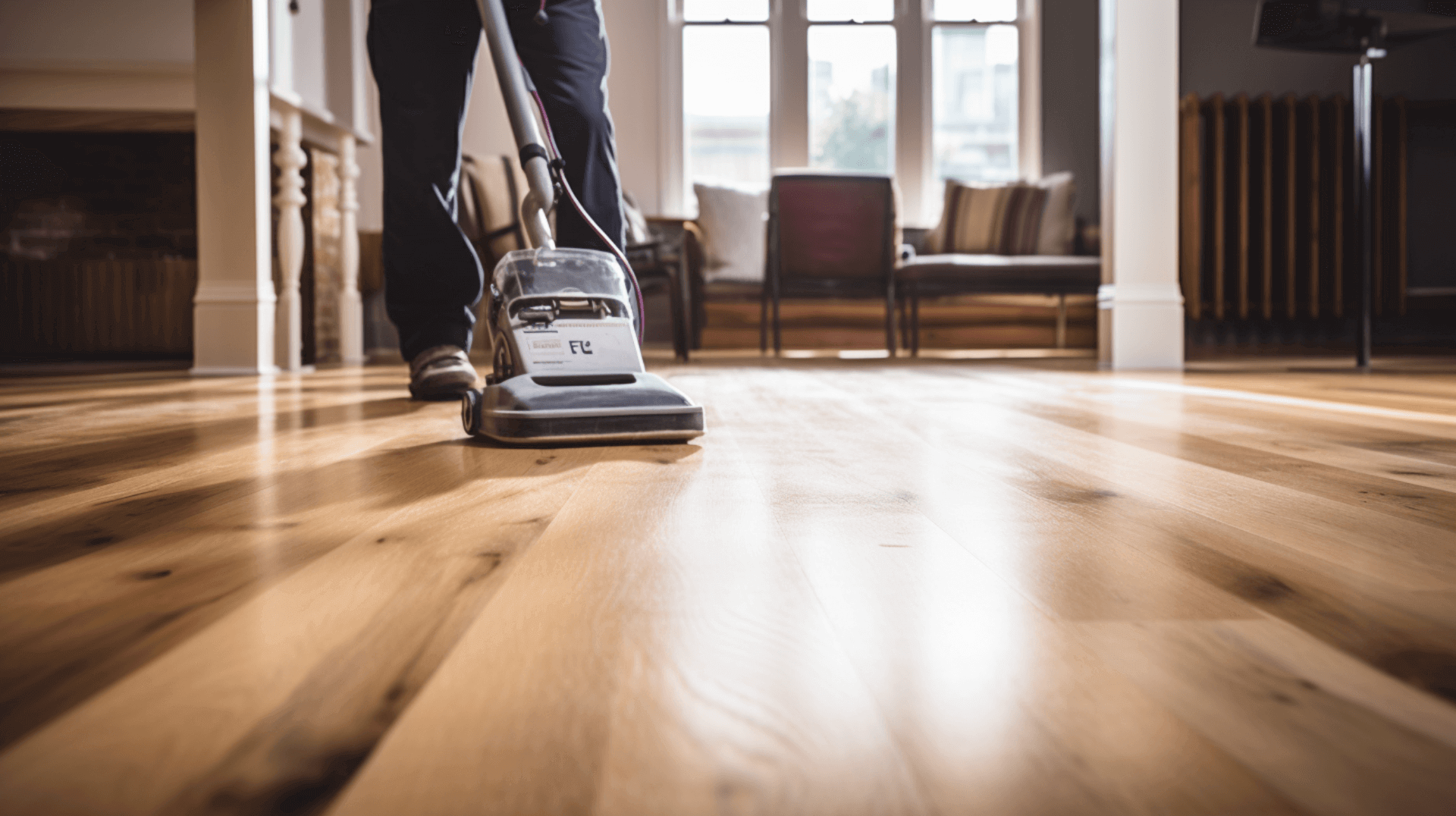
After wooden floor sanding, proper aftercare and maintenance are crucial for ensuring the longevity of the floor. Here are some additional steps to take for maintaining your newly sanded floor:
- Ensure proper sealing: It is important to properly seal the floor to protect it from dirt, dust, and moisture. This will help maintain its appearance and prevent damage.
- Regular cleaning: Regularly clean the floor using a vacuum cleaner or a damp mop to remove any dirt or dust that has accumulated on the surface. This will help keep the floor looking its best.
- Check for signs of damage: Regularly inspect the floor for any signs of wear and tear, as well as any indications of moisture or dampness. If any damage or moisture is noticed, address it promptly to prevent further harm.
- Use furniture protectors: To prevent scratches and dents, use furniture protectors under the legs of your furniture. This will help preserve the floor’s surface.
- Check for potential issues: It is important to check for rising damp, rot, or decay of joist ends, as well as the suitability of the timber floor to be insulated. Additionally, assess the condition of the sub-floor, including the presence of ventilation, air bricks, and any water or condensate pipes in the sub-floor voids.
GJP Floor Sanding offers a range of aftercare services to assist in maintaining your floor’s longevity. We can provide guidance on proper cleaning techniques, recommend suitable products, and offer advice on addressing any potential issues that may arise.
By following these aftercare and maintenance steps and utilizing the services offered by GJP Floor Sanding, you can ensure the long-lasting beauty and durability of your wooden floor.
What Our Experts at GJP Floor Sanding Say

When it comes to advice for those considering wooden floor sanding, our experts at GJP Floor Sanding emphasize the importance of proper preparation. This includes removing any furniture, rugs, and other items from the area, as well as checking for any pre-existing problems or defects. We also recommend checking the moisture content of the timbers and probing suspect timbers near actual or potential sources of dampness. It is crucial to check for rising damp, rot, or decay of joist ends, as well as the suitability of the timber floor to be insulated. Additionally, assessing the condition of the sub-floor, including the presence of ventilation, air bricks, and any water or condensate pipes in the sub-floor voids, is essential.
Our experts also suggest checking for deflection in the timbers, which may be caused by rot or decay, and ensuring that the joist ends are firmly fixed, built into the opposing walls, or hung from brackets. Furthermore, they recommend checking for any significant cracks, splits, and gaps in the floorboards, as these may need to be addressed before sanding.
By following these recommendations and working closely with the GJP Floor Sanding team, you can ensure that your space is properly prepared for wooden floor sanding. This attention to detail will contribute to a successful and long-lasting result.
Ready to Transform Your Wooden Floors? Contact GJP Floor Sanding
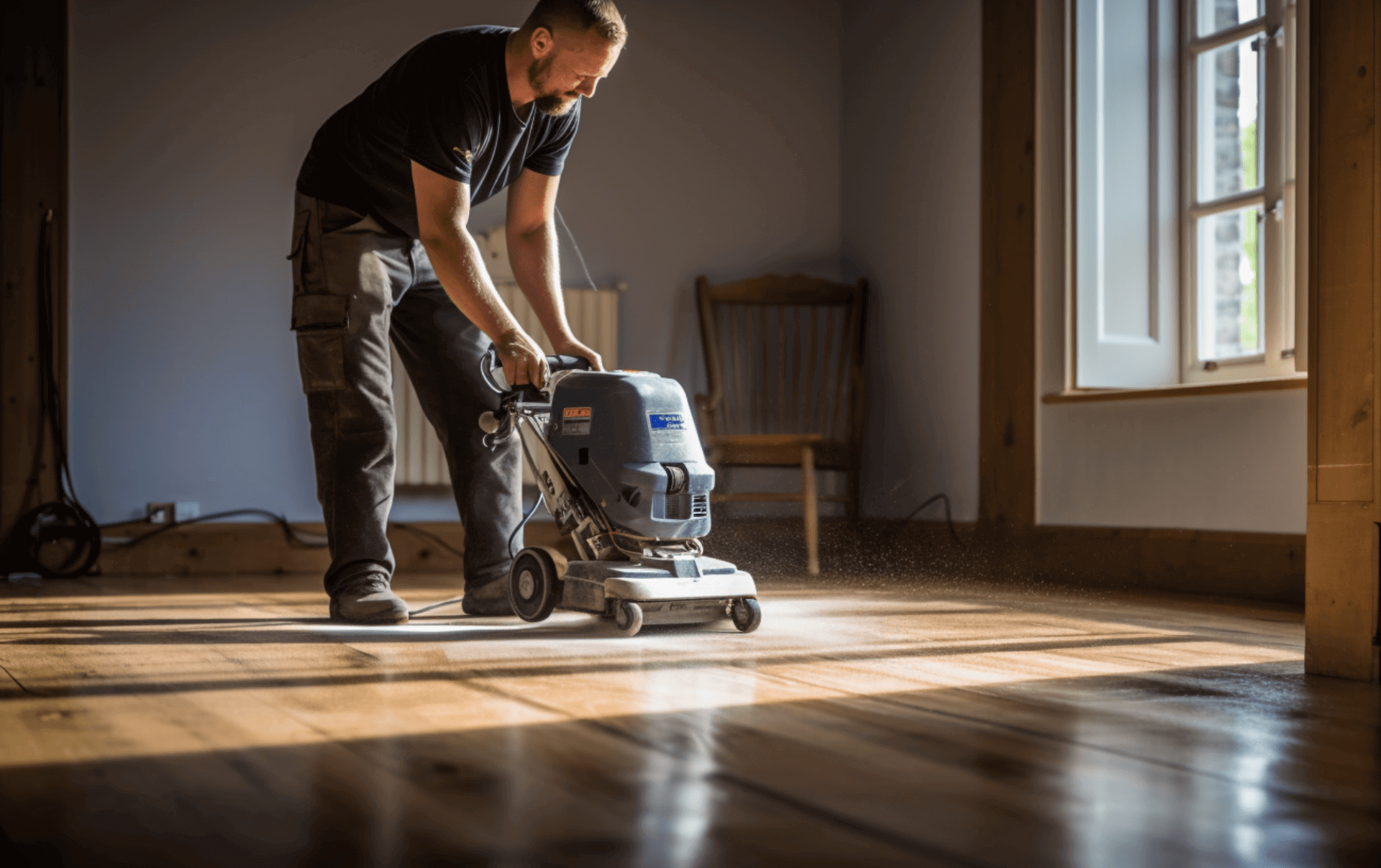
If you are ready to transform your wooden floors, GJP Floor Sanding is here to help. Our team of experts can provide you with a consultation or quote for your wooden floor sanding needs in London.
To get in touch with GJP Floor Sanding, simply visit our website or give us a call. When contacting us, it is important to have the following information ready: the size of the area to be sanded, the type of wood, and any existing problems or defects. Additionally, it is important to check for rising damp, rot, or decay of joist ends, as well as the suitability of the timber floor to be insulated. Assessing the condition of the sub-floor, including the presence of ventilation, air bricks, and any water or condensate pipes in the sub-floor voids, is also crucial. Checking for flues, underfloor heating, damp-proof courses, condensation, and any other potential issues that may arise is important as well.
At GJP Floor Sanding, we are committed to providing our customers with the highest quality of service. Our team of experts utilizes the latest technology and techniques to ensure a successful and long-lasting result. We prioritize customer satisfaction and aim to provide a seamless and stress-free experience. Our aftercare services will help you maintain the beauty and longevity of your newly sanded floors.
Contact GJP Floor Sanding today to transform your wooden floors and experience the difference of our exceptional service.
